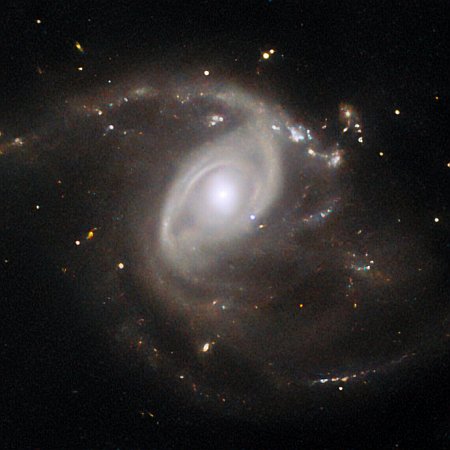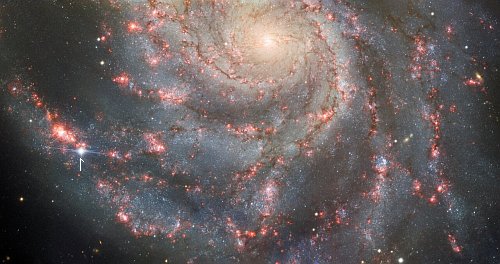Astronomers discover supernovae that apparently exploded twice
Using the ground-based Very Large Telescope (VLT) in Chile, astronomers have discovered evidence suggesting a star apparently exploded twice went it went supernova several hundred years ago.
They detected this possibility by looking at the remnant of that blast, shown to the right. It shows a double halo, indicated by the blue and orange colors. The blue however is seen in both shells. As noted by the VLT’s press notice:
Calcium is shown in blue, and it is arranged in two concentric shells. These two layers indicate that the now-dead star exploded with a double-detonation.
This type of supernova, dubbed type 1a, occurs when a white dwarf sucks matter from its closely orbiting stellar companion. That material piles up on the surface of the star until it reaches critical mass and explodes, causing the supernova.
The two shells, suggesting a double detonation, fits a theory proposed for this process. From the paper’s abstract:
Our analysis reveals that the outer calcium shell originates from the helium detonation at the base of the outer envelope, while the inner shell is associated with the carbon–oxygen core detonation. This morphological distribution of intermediate-mass elements agrees qualitatively with the predicted signature of the double detonation of a sub-Chandrasekhar-mass white dwarf from a hydrodynamical explosion simulation.
In other words, the outer shell resulted from the explosion caused by the helium ripped from the companion star, with the resulting shockwave detonating the second explosion inside the white dwarf’s core.
That’s the theory at least. This data supports it, but it certainly doesn’t prove it.
Using the ground-based Very Large Telescope (VLT) in Chile, astronomers have discovered evidence suggesting a star apparently exploded twice went it went supernova several hundred years ago.
They detected this possibility by looking at the remnant of that blast, shown to the right. It shows a double halo, indicated by the blue and orange colors. The blue however is seen in both shells. As noted by the VLT’s press notice:
Calcium is shown in blue, and it is arranged in two concentric shells. These two layers indicate that the now-dead star exploded with a double-detonation.
This type of supernova, dubbed type 1a, occurs when a white dwarf sucks matter from its closely orbiting stellar companion. That material piles up on the surface of the star until it reaches critical mass and explodes, causing the supernova.
The two shells, suggesting a double detonation, fits a theory proposed for this process. From the paper’s abstract:
Our analysis reveals that the outer calcium shell originates from the helium detonation at the base of the outer envelope, while the inner shell is associated with the carbon–oxygen core detonation. This morphological distribution of intermediate-mass elements agrees qualitatively with the predicted signature of the double detonation of a sub-Chandrasekhar-mass white dwarf from a hydrodynamical explosion simulation.
In other words, the outer shell resulted from the explosion caused by the helium ripped from the companion star, with the resulting shockwave detonating the second explosion inside the white dwarf’s core.
That’s the theory at least. This data supports it, but it certainly doesn’t prove it.









